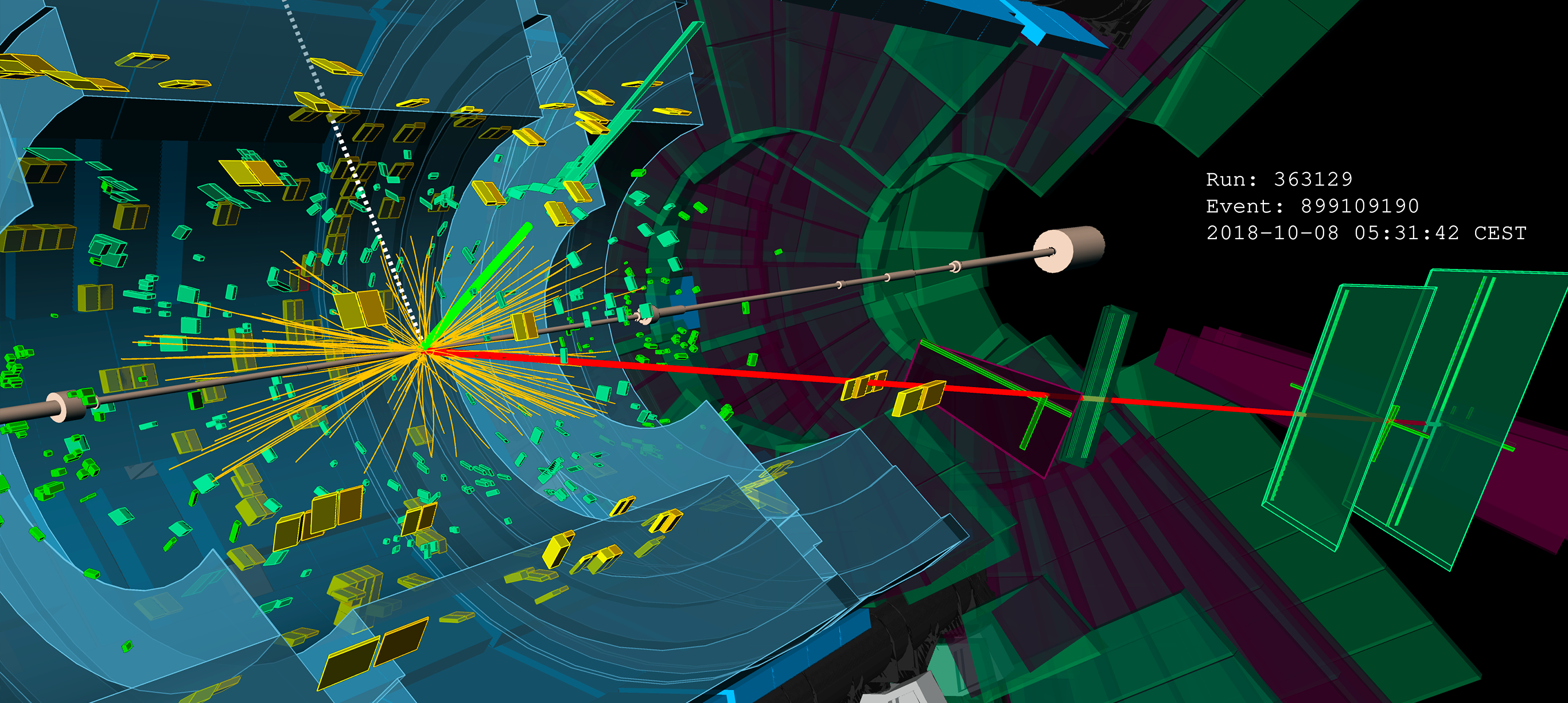New ATLAS result addresses long-standing tension in the Standard Model
28 May 2020 | By
Perhaps the best-known particle in the lepton family is the electron: a key building block of matter and central to our understanding of electricity. But the electron is not an only child. Electrons are accompanied by heavier siblings, the muon and tau-lepton, to give three lepton flavours. According to the Standard Model of particle physics, the only difference between these siblings should be their mass: the muon is heavier than the electron, and the tau-lepton is heavier than the muon. It is a remarkable feature of the Standard Model that each flavour is equally likely to interact with a W boson; this is known as lepton flavour universality.
This week, at the Large Hadron Collider Physics (LHCP 2020) conference, the ATLAS Collaboration presented a precise measurement of lepton flavour universality using a brand-new technique. Physicists examined collision events where pairs of top quarks decay to pairs of W bosons, and subsequently into leptons. They then measured the relative probability that this lepton is a muon or a tau-lepton – a ratio known as R(τ/μ). According to the Standard Model, R(τ/μ) should be unity, as the interaction strength with a W boson should be the same for a tau-lepton and a muon. But there has been long-standing tension with this prediction, ever since experiments at the Large Electron-Positron (LEP) collider in the 1990s measured R(τ/μ) to be 1.070 ± 0.026, deviating from the Standard Model expectation by 2.7 standard deviations. This has motivated a new measurement with higher precision.
The new ATLAS measurement of lepton flavour universality is in agreement with the Standard Model expectation, suggesting that the previous discrepancy measured by the Large Electron-Positron collider may be due to a fluctuation.

LEP collided electrons and their anti-particles (positrons), which provided a very clean environment for precision measurements like this one. Yet it produced a relatively low number of W bosons, limiting the measurement’s statistical precision. The LHC collides protons, which are strongly interacting composite particles that create more complicated collisions. This gives larger backgrounds to such measurements, such that it had not been thought possible to reach the same level of precision as LEP. The LHC – often referred to as a top-quark factory – produces over 100 million collisions containing top-quark pairs, thus providing a huge dataset from which to measure R(τ/μ).
One of the complexities of this analysis comes in identifying the origin of the muons used to measure R(τ/μ). They are produced either from the W boson directly decaying to a muon (prompt μ), or from the W boson decaying to a tau-lepton and the tau-lepton subsequently decaying to a muon (τ→μ) plus two invisible neutrinos. But how can physicists tell which is which?
The tau-lepton has a significant lifetime – a tau-lepton with 40 GeV momentum flies about 2 millimetres in the detector before decaying into multiple particles, including a muon. This leads to a slightly different signature in the detector compared to the muons coming directly from W boson decays (with no measurable flight length). Fortunately, the ATLAS detector is excellent at reconstructing muons as they pass through the experiment. Physicists are able to determine the origins of the muons by examining how close the muon track is to the beam line (|d0μ|) and its transverse momentum (pTμ), as shown in Figure 1. They can then extract R(τ/μ) and, in doing so, cancel out several systematic uncertainties which appear in the numerator and denominator. This is a key feature of the analysis and is what enables the high precision of the measurement.
The new ATLAS measurement gives a value of R(τ/μ) = 0.992 ± 0.013. This is the most precise measurement of this ratio to date, with an uncertainty half the size of that from the combination of LEP results. Figure 2 compares this result to the previous LEP measurement. The ATLAS measurement is in agreement with the Standard Model expectation and suggests that the previous LEP discrepancy may be due to a fluctuation. The Standard Model survives this latest test of lepton flavour universality!

Learn more
- Test of the universality of τ and μ lepton couplings in W boson decays from ttbar events at 13 TeV with the ATLAS detector (arXiv:2007.14040)
- LHCP 2020 talk: Measurements of top properties in ATLAS by C. Young
- LHCP 2020 talk: Rare top production processes, rare top decays by E. Shabalina
- Electroweak Measurements in Electron-Positron Collisions at W-Boson-Pair Energies at LEP (arXiv: 1302.3415)
- See also the full lists of ATLAS Conference Notes and ATLAS Physics Papers.



